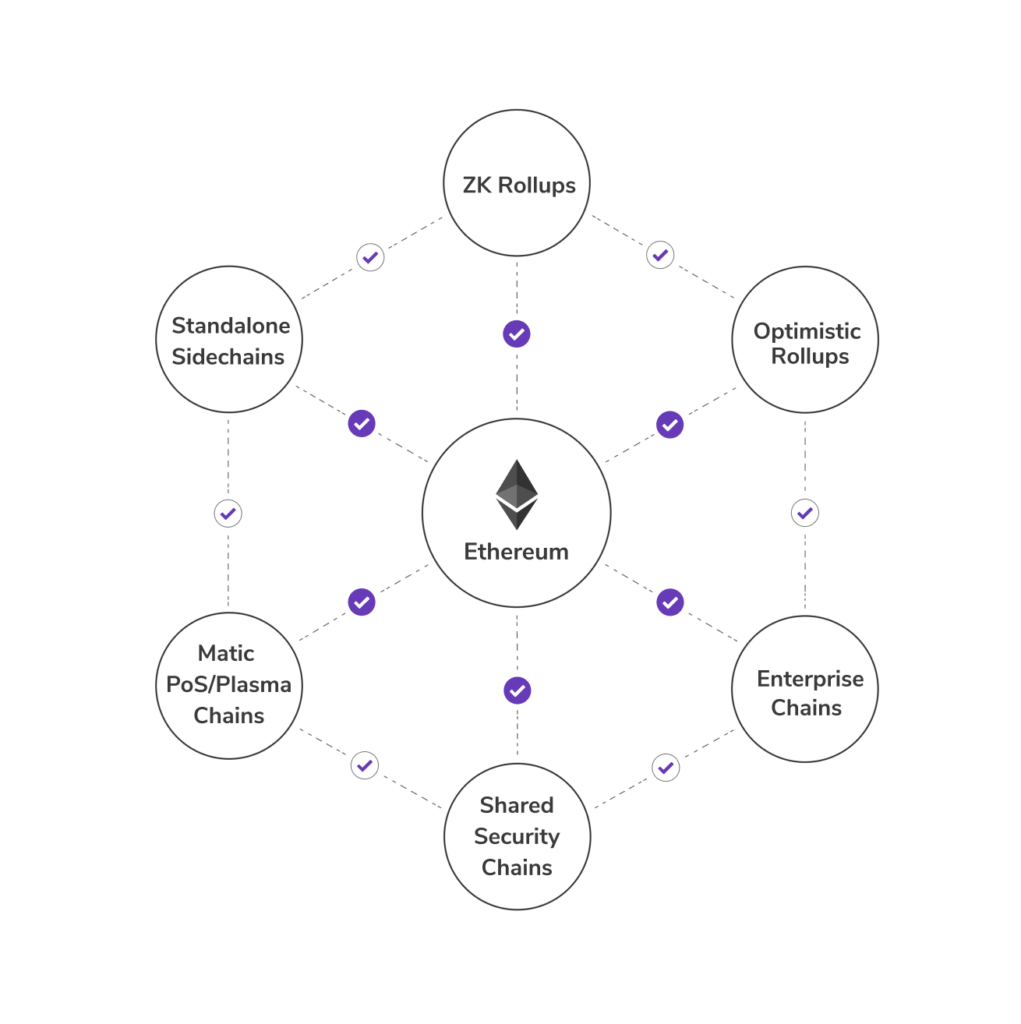Polygon matic
Summary
Polygon is a protocol and framework for building and connecting Ethereum-compatible blockchain networks. It’s a layer-2 (‘L2’) solution designed to alleviate Ethereum’s scalability and usability issues without compromising decentralisation. Polygon aims to enable Ethereum to become a full-fledged, powerful multi-chain system.
Polygon launched in 2017 as Matic Network (‘Matic’) before rebranding in Feb. 2021. Regardless of the name, the project has always had the same focus: help Ethereum scale.
Polygon uses Polygon SDK, a flexible network that enables interoperability between its 2 core blockchain solutions: secured chains and sidechains.
Polygon’s solution is to create this framework to build and connect Ethereum-compatible blockchain networks. This will turn it into a multi-chain system, similar to Polkadot or Cosmos. Polygon lists some of the upsides separating them from other ecosystems are their ability to inherent Ethereum’s network effects, greater security properties and a more open and powerful ecosystem.
Several high-profile names from the Ethereum ecosystem are advising the Polygon team: Hudson Jameson (Ethereum Foundation), Ryan Sean Adams (Bankless), Anthony Sassano (EthHub), Pete Kim (Coinbase) and John Lilic (ex-ConsenSys).

Token Utility
Polygon’s native token is MATIC (‘MATIC’). As of this writing, 4,966,397,110 MATIC are in circulation with a maximum supply of 10,000,000,000.
MATIC is an ERC-20 token used to pay for services in the Polygon ecosystem. For example, transaction fees are paid in MATIC. It also serves as a settlement currency between users operating in the ecosystem. MATIC owners participate in the PoS consensus as MATIC is used to pay staking rewards.
The composition of MATIC’s total supply is as follows: ecosystem (23%), foundation (21.9%), Launchpad sale (19%), team (16%), network operations (12%), advisors (4%), seed round (2.1%) and early supporters (1.7%).
Collective Shift Analysis
To see Collective Shift’s analysis, sign up or try our free trial today!